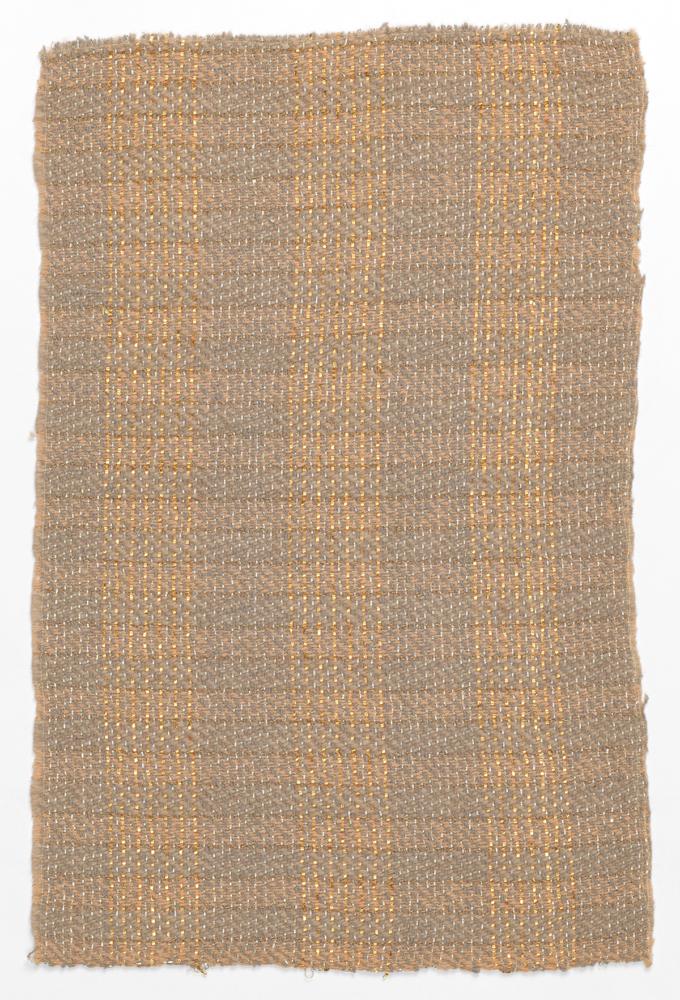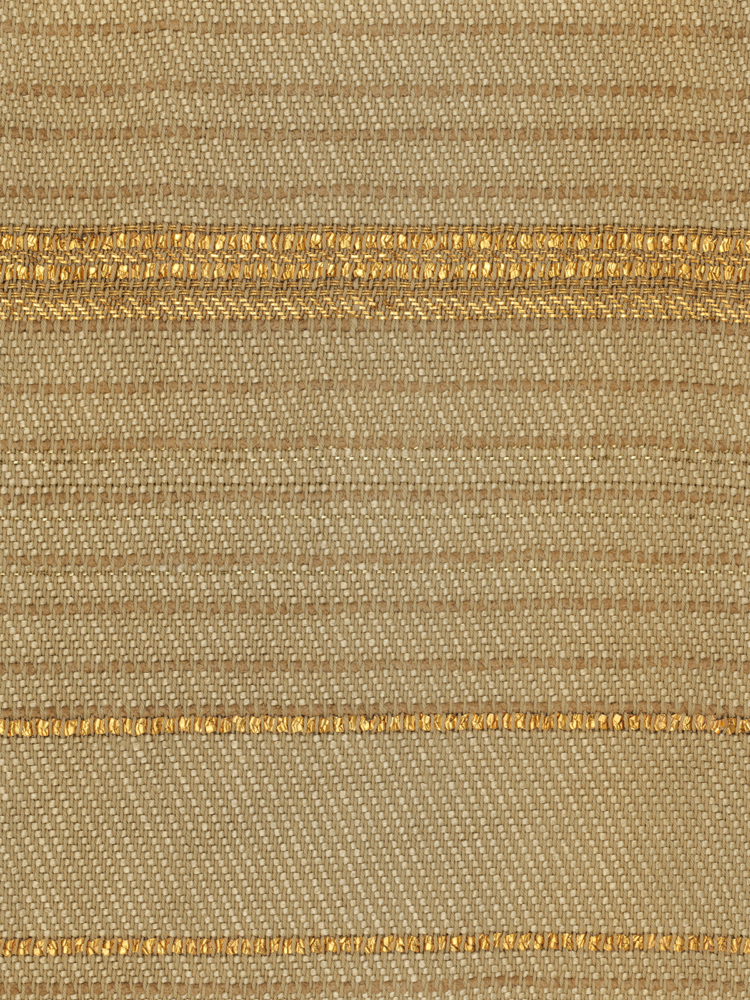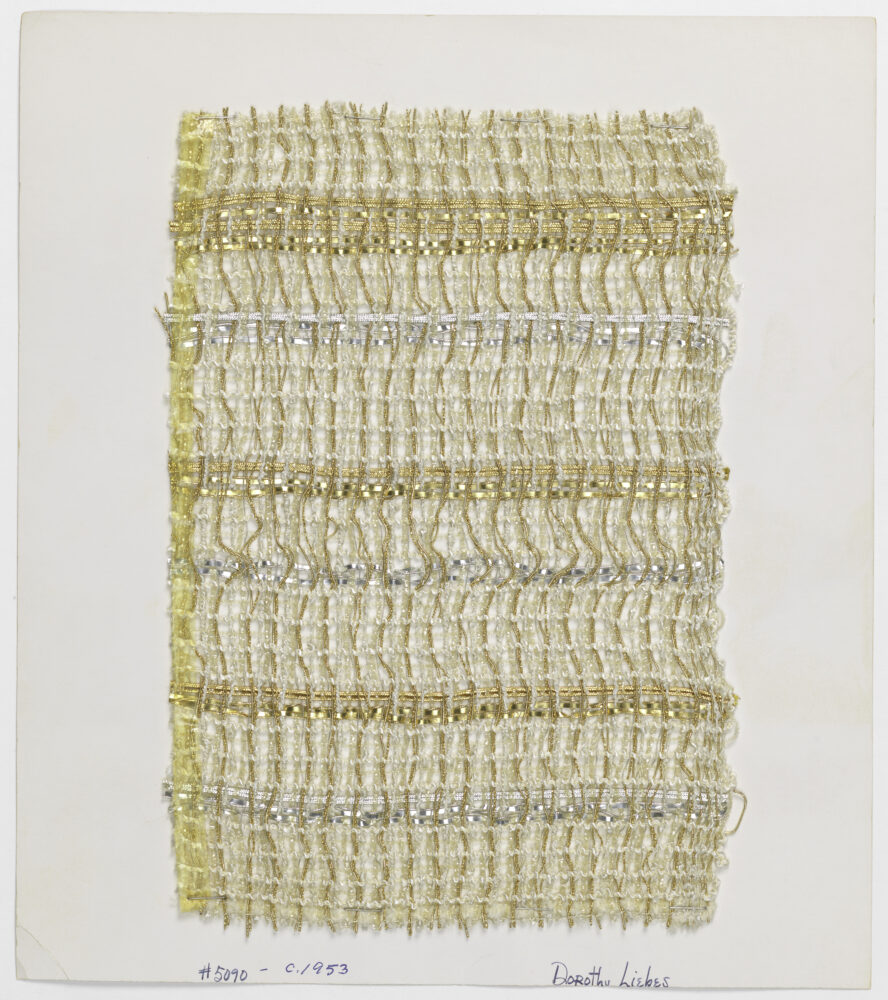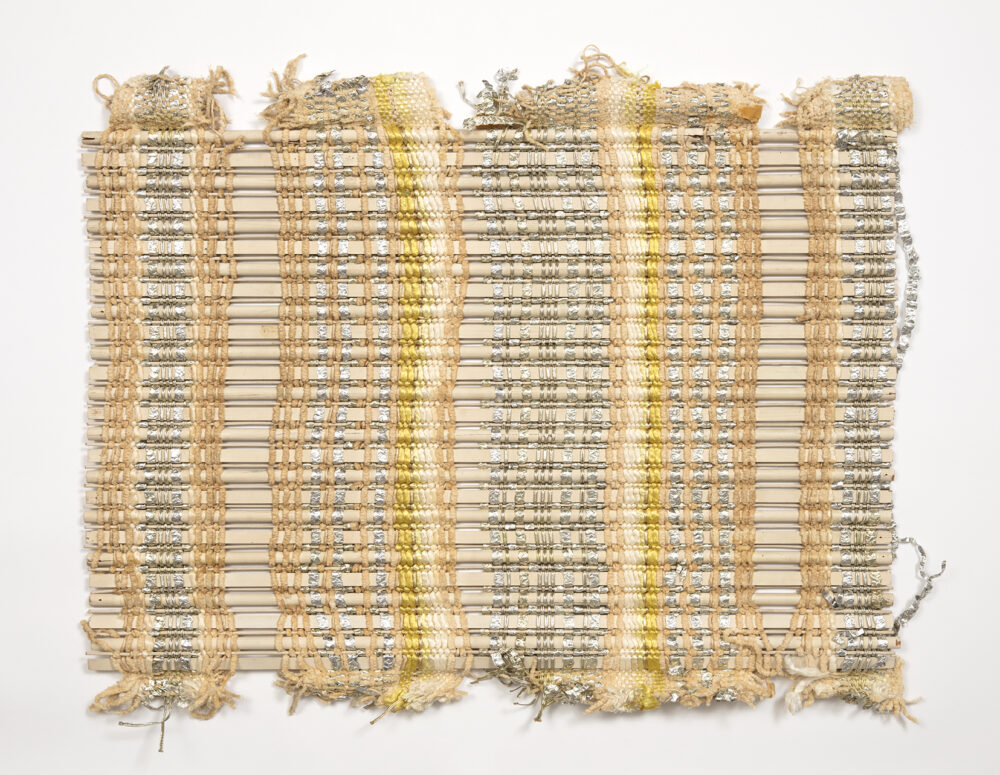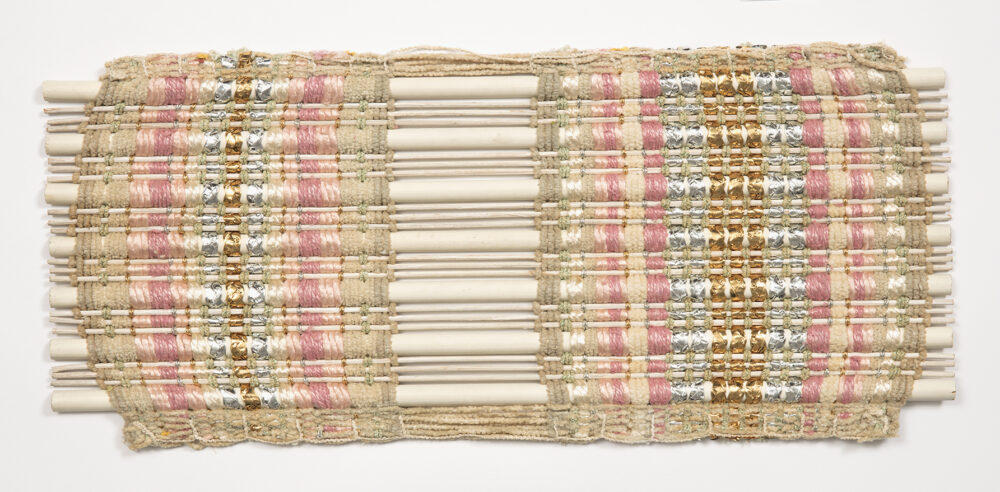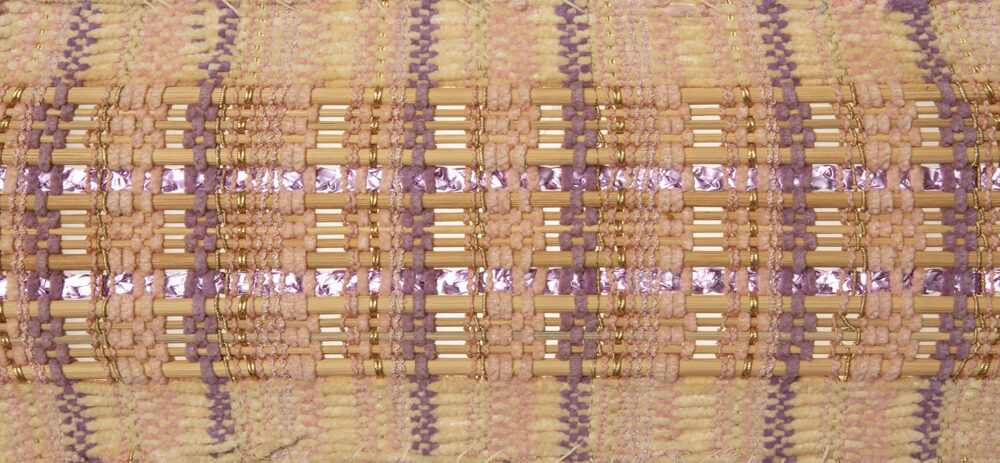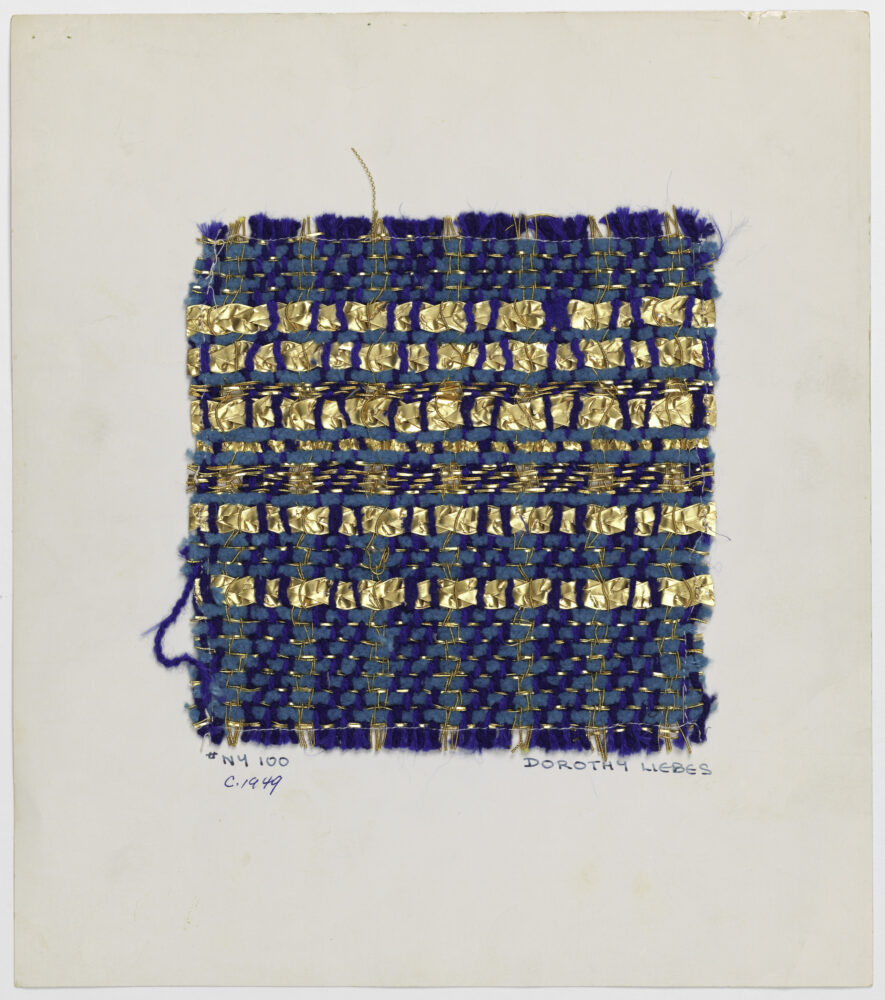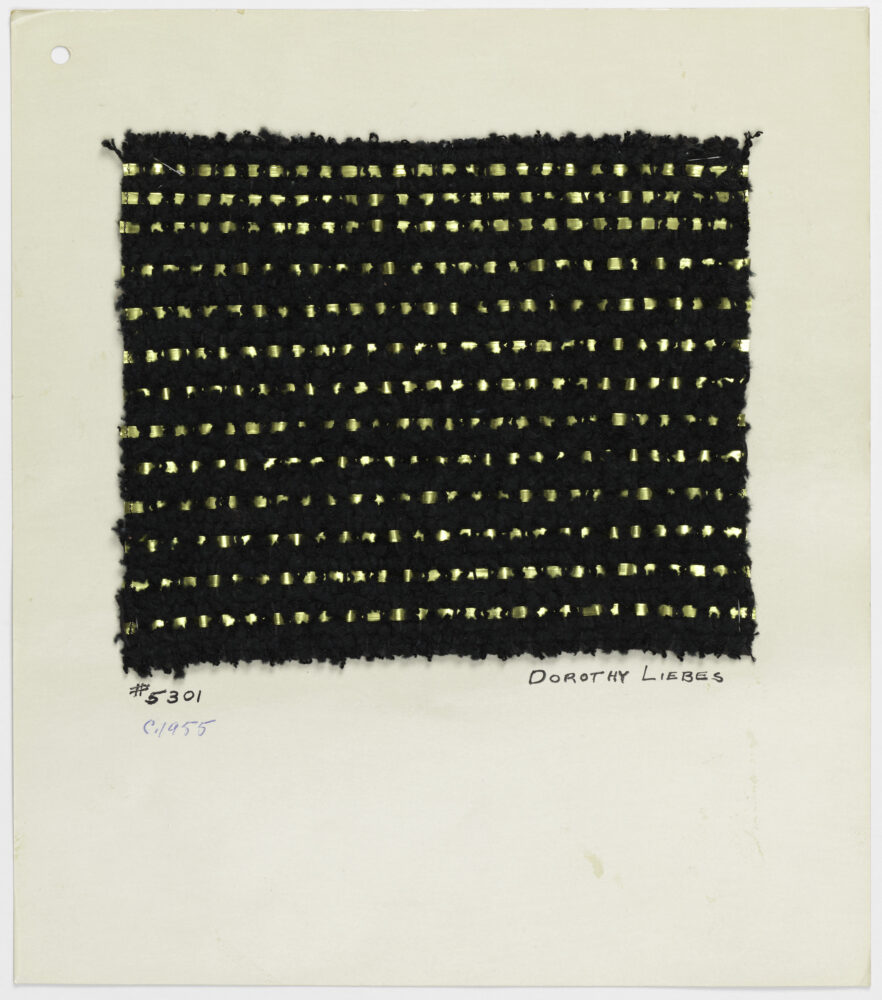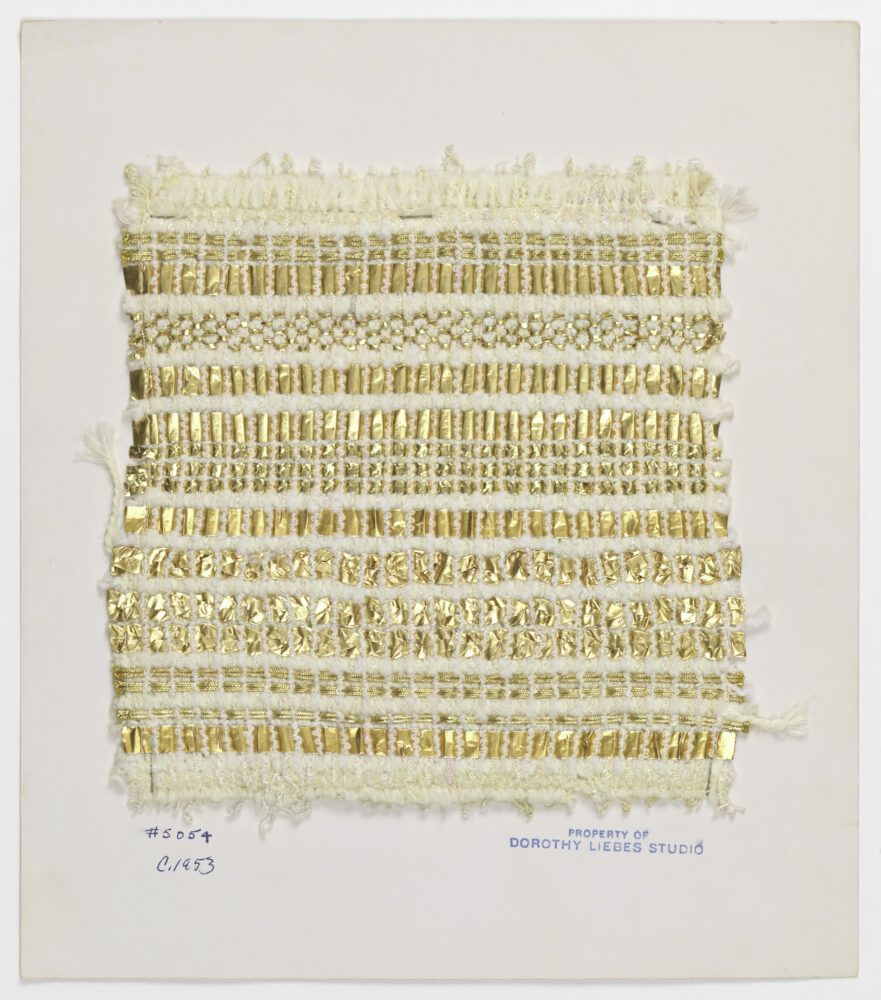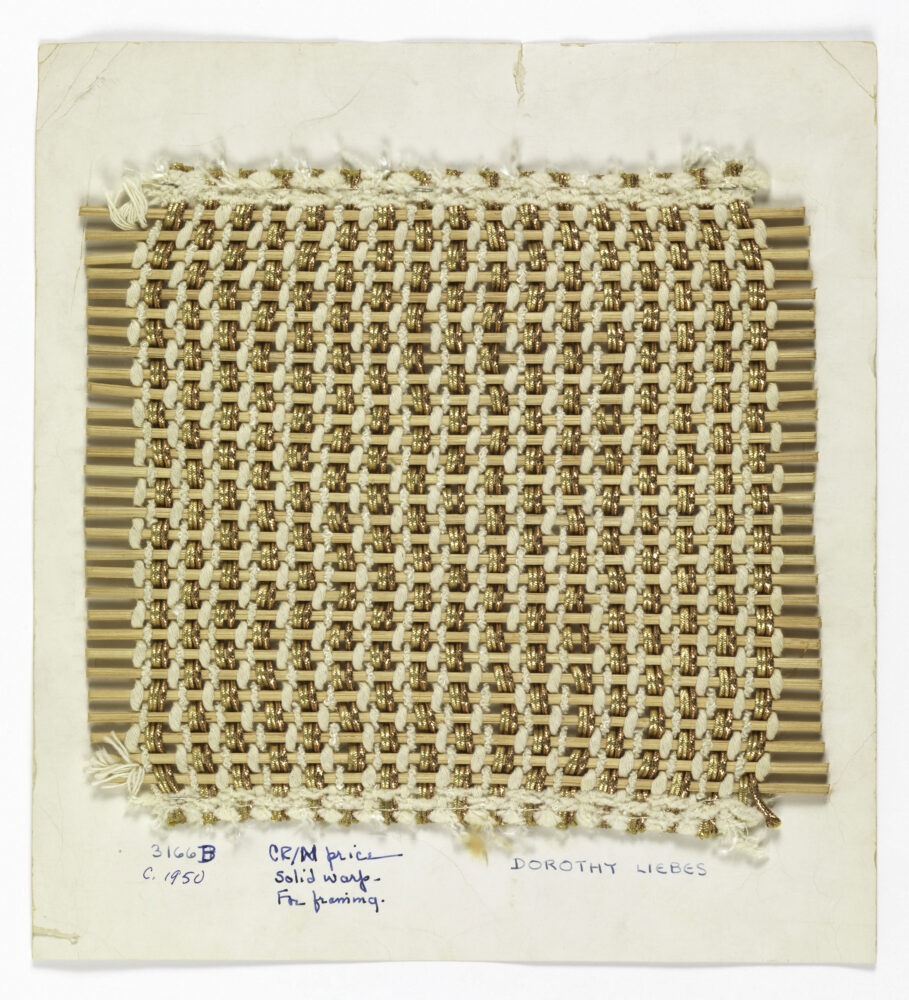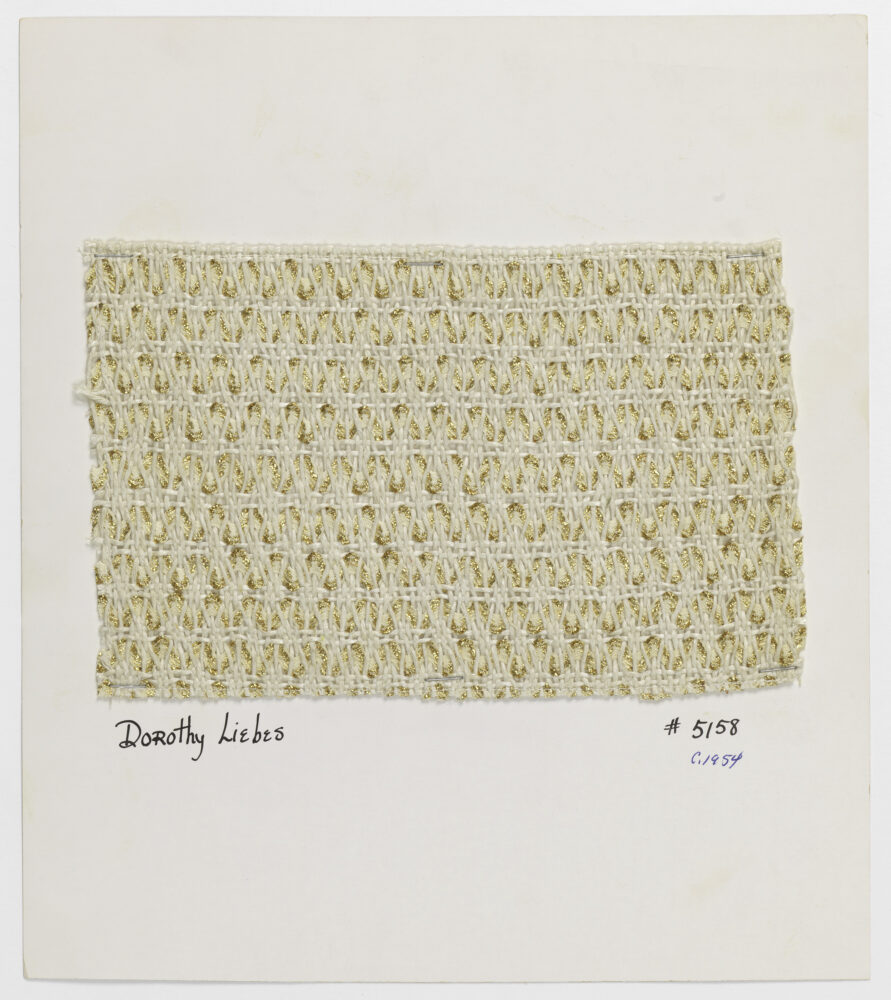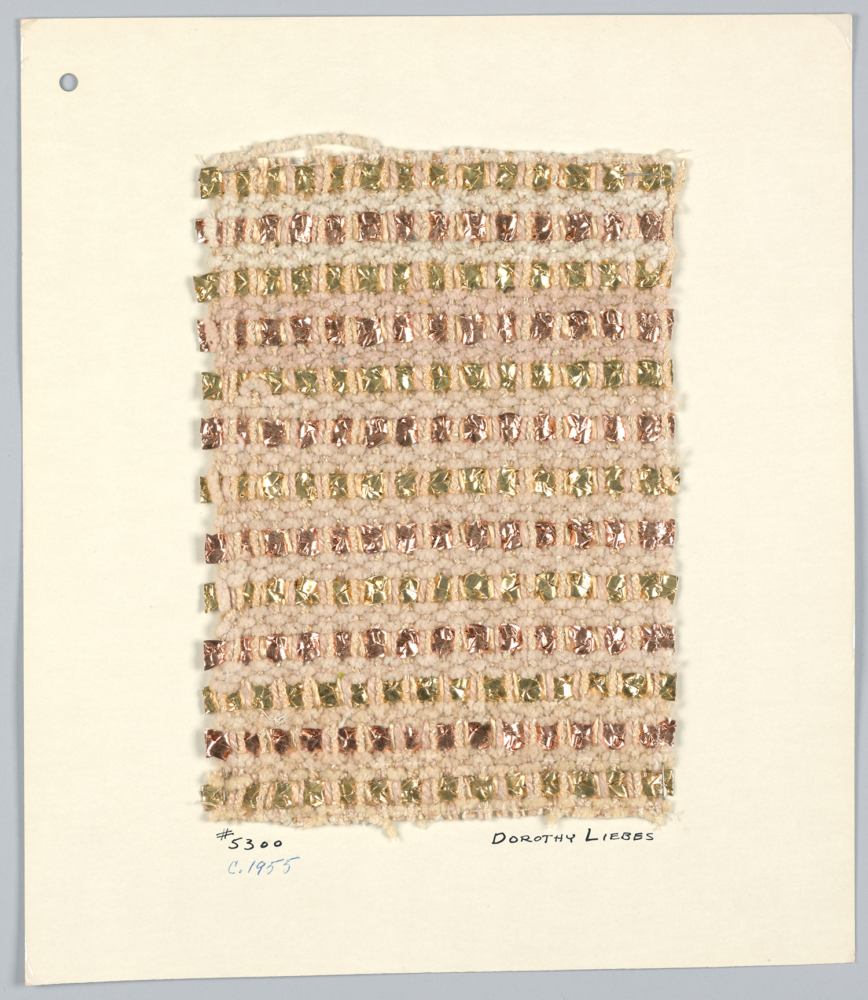“Glitter is like vibration. Glitter is what the sun does to grass, what light does to nature.”
—Dorothy Liebes, 1966 [1]
Dorothy Liebes was a shaper of light. She allied herself with architects and deployed her repertoire of materials and techniques to create dynamic and changing environments, bringing a soft glow or dramatic sparkle to a room. She used open weaves and translucent materials such as nylon cord or acrylic rods to draw in daylight while filtering the sun’s harshest glare. She combined the soft radiance of silk and rayon with the shimmer of metallic yarns to multiply and scatter incandescent light or the glow of candles. “When the electric lights are turned on at night,” she wrote, “Lurex lights up the room, and in a way that can be enormously beautiful.” [2] All her glimmering effects were enhanced by movement—whether of the viewer, engaging in the life of a room, or the wearer, in the case of her Lurex-threaded fashions.
Liebes was attuned to the architectural nature of weaving itself—keenly aware of the shapes yarns make as they move through a woven structure. Designing with metallics, she played with the shape of the reflected light: a wide, flat Lurex tape yarn moving over bamboo rods in a woven blind created cylindrical forms like bugle beads; the tiny checkerboard of a balanced plain weave broke up the reflections into a thousand tiny dots, like sequins; superfine metallic cord wrapped around a duller yarn gave an elusive, occasional twinkle, like the flashing of fireflies. When consulting for the Dobeckmun Company, makers of Lurex, her experiments prompted the diversification of the Lurex line as she lobbied for a greater range of widths; a round, rather than flat, Lurex yarn for use in knitting; and a Lurex staple for spinning with other fibers. She introduced Lurex colors that she frequently used in tone-on-tone or close chromatic compositions. “Fabrics had an iridescent quality, almost a gentle glow,” wrote one admiring reviewer. “It was not the metallic thread that was noticed but the refraction of light.” [3]
Notes
[1] Pauline Sterling, “Dorothy Tries to Put Glitter into Our Cars,” Detroit Free Press, November 16, 1966.
[2] Dorothy Liebes, letter to Lynn Given (of Dow-Dobeckmun), March 2, 1959. Series 5, Box 6, Folder 40, Dorothy Liebes Papers, Archives of American Art, Smithsonian Institution, Washington, DC.
[3] Faith Corrigan, “Golden Thread Is Purified in Fashions and Furnishings,” New York Times, September 24, 1956.
